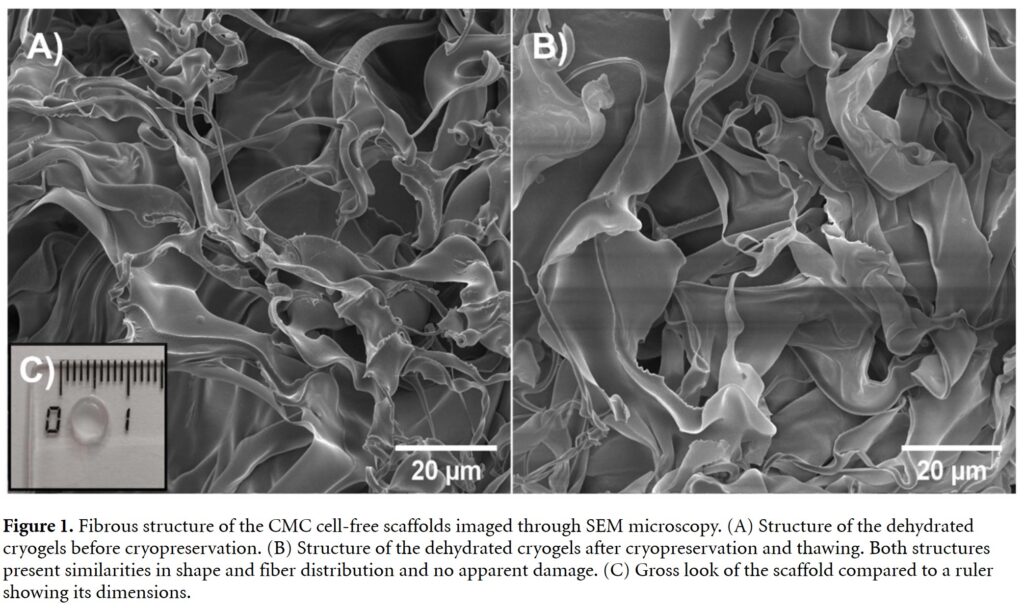Alba Herrero, Marc Azagra and Irene Marco-Rius from the Molecular Imaging for Precision Medicine Laboratory at IBEC, have developed a viable cryopreservation method to preserve bioengineered, three-dimensional (3D) cell models, including patients’ samples. The results of their work have been recently published on the Biomedical Materials Journal.
Cryopreservation of biological material as living tissue, cell lines and primary cells is a technique widely used in most molecular biology laboratories around the world. However, this technology was not adapted for its use on three-dimensional (3D) cell models. What Bloc researchers, led by Irene Marco-Rius, coordinator of BLOC project, have done now is to go a step further in this field and develop a viable protocol for spheroid cryopreservation and survival based on a 3D carboxymethyl cellulose scaffold and precise conditions for freezing and thawing.
By applying the new cryopreservation protocol, researchers were able to efficiently cryopreserve bioengineered hepatocytes, for which the scaffold provides both the 3D structure for cells to self-arrange into spheroids and to support cells during freezing for optimal post-thaw viability.
“The use of the 1% Carboxymethyl cellulose cryogel scaffold is crucial to procure support for the cells through the process as well as to aid in the removal of the cryoprotective agent after thawing for improved cell viability”.

This new protocol could be adapted for other bioengineered tissues and may be used to applications that demand high-integrity preservation and transport of pre-assembled 3D models, as cell lines and samples from patients. Moreover, the methodology described in this work pave the way for the development of protocols that simplify and reduce the cost and infrastructures required for the research with 3D cell cultures.
Reference article: Alba Herrero-Gómez, Marc Azagra, Irene Marco-Rius. A cryopreservation method for bioengineered 3D cell culture models. 2022 Biomed. Mater. 17 045023. DOI 10.1088/1748-605X/ac76fb